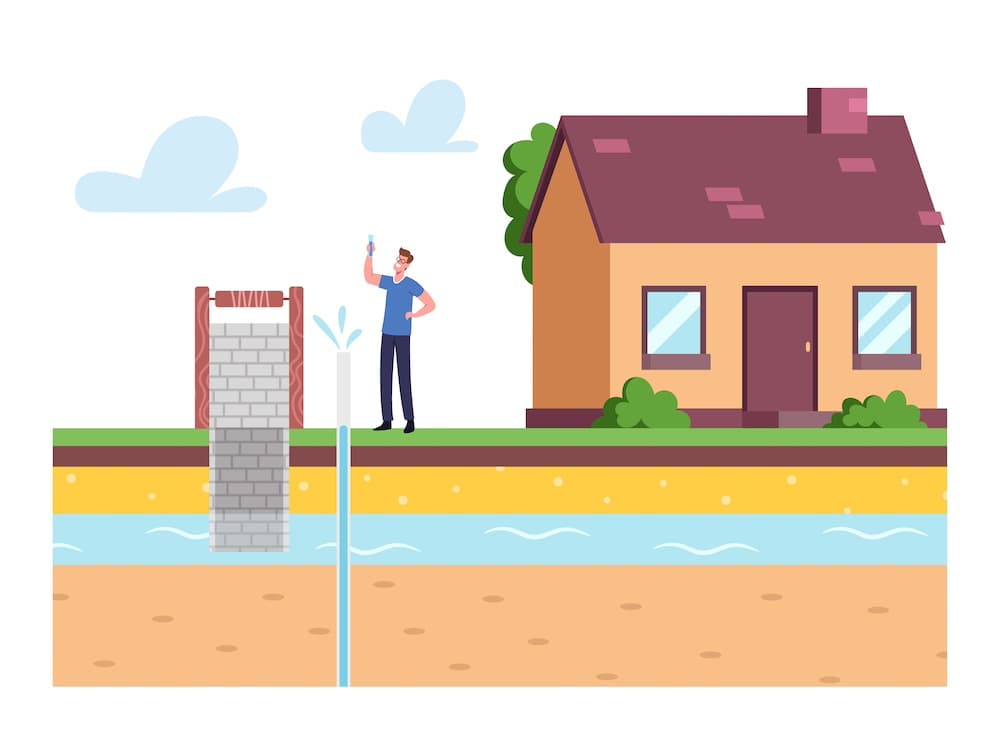
Fresh water is the most valuable of all the resources, but that is fast depleting from the earth’s surface. However, the good news is that we can help preserve this valuable resource by harvesting water right in our backyards.
Rainwater is a salt-free resource that has multiple uses, such as watering plants, cleaning dishes, and mopping floors, among other things. Every household should strive to collect rainwater and use it for domestic purposes during the monsoon. By using water conservation techniques such as rainwater harvesting, we can decrease our dependence on underground water and support sustainable living. We’ve compiled a list of 10 DIY rainwater harvesting strategies that you can effortlessly implement at home.
Benefits of Rainwater Harvesting
From repairing leaking faucets to stopping the stream while brushing our teeth, every single effort we take in our daily lives to reduce water waste counts as harvesting. But a few technologies or rainwater harvesting systems are available for you that can help you conserve water effectively. However, this article will focus on some easy-to-apply DIY water-saving solutions. Before getting into the technicalities of the rainwater harvesting system, let us understand the advantages of this tool.
- Reduces hardness, salinity, and TDS levels in the underground water.
- A household water collection system can provide sufficient water during the peak summer months.
- Rainwater collection can assist cities in achieving new environmental and water efficiency ratings and requirements.
- The rainwater harvesting sector can potentially become a major job provider in the sustainable building movement.
10 Innovative DIY Rainwater Harvesting Tips to Collect and Preserve Rainwater
01. Collect Rainwater in Drums

Let us begin with the simplest strategy, one we frequently witness individuals practicing unknowingly around us. Use an old drum or a big garbage can to create your rain barrel. Connect it to a pipe installed to collect rainwater from the house’s roof and porch for more efficiency. Install a tight-fitting cap on the barrel and screen the ends of the downspouts that feed into the barrels to prevent them from becoming a habitat for mosquitoes.
02. Embrace Nature with Rain Garden

A rain garden is a miniature subterranean garden landscape. To filter the water of contaminants and allow it to soak into the earth, replenishing the groundwater, this landscaping includes native plants, nutrient-enriched soil, and probiotic moss. This system works better if you live in an independent house with your own backyard.
03. Rain Water Harvesting in Zero Discharge Method

The zero discharge method is normally adopted for housing colonies, but it can also be implemented in the compound of an individual house. The main concept behind zero-discharge rainwater harvesting is to make sure that the soil within the plot absorbs all rainfall on the plot, preventing it from draining out. Here is a brief outline of how this method works:
- Obtain data on the maximum hourly rainfall in your locality for the last 50 years from the local Meteorological Department.
- Based on this rainfall data and the area of your plot, calculate the volume of water that you can collect during the maximum hourly rainfall.
- Conduct tests to determine the soil’s absorption capacity at different depths in your plot.
- Calculate the number and size of recharge pits needed based on the soil’s absorption capacity and the volume of water collected during peak rainfall.
Pro Tip: An important aspect of this method is treating the rainwater with lime before discharging it into the ground. This treatment helps prevent contamination of the groundwater. To achieve this, rainwater is passed through a chamber containing lime before it is discharged into the recharge pits.
04. Experiment With Rainwater Collecting Chain

The rainwater chain is an interesting landscape element used in Asian-inspired decor and gardening for ages. By directing rainwater from the receiving pipe down to a drain or a tank, these charming, functional, and ecologically sustainable additions help prevent overflow. You can get more creative with its design and material choice. For instance, you can use bamboo water chains instead of PVC pipes.
05. Splash Block

The primary function of a splash block is to resist and absorb the force of downpours coming from the pipe connected to the roof. But these can also be effective tools for harvesting rainwater. Splash blocks can contribute to maintaining the condition of plants and gardens during dry spells by rerouting water flow into a barrel or other container. Furthermore, you can use the collected rainwater to water plants and other home essentials.
06. Recharge your Borewells

Recharging groundwater is one of the oldest, most effective, and most natural ways to store fresh water. Terrace rainwater is routed via pipes with filtration at the end to open boring wells to recharge subsurface reservoirs. If you have boreholes or a well in your home, attach a strong pipe to route the water from the barrel system into the boreholes or a well.
07. Rain Saucer

A rain saucer system, which resembles an overturned umbrella, is an excellent roof-less rainwater collection device. It does not necessitate the connection of terraces, drains, or outlets for rainwater harvesting. Rain saucers make an excellent free-standing rain-collecting system if you’re searching for an easy DIY approach to quickly collecting rainwater. It also reduces the possibility of contaminants because this simple-to-install technology receives rain directly from the clouds.
08. Dry System with Water Tank

If you want to avoid leakage and wetness on your roof, you should try this water harvesting technique. A dry system is any plumbing that enables rainfall to enter your rainwater tank from your roof. A water tank placed next to a downpipe is one of the best examples of a dry system. Pipes connected to this downpipe channel rainwater into the tank. Every time it rains, all the water drains into the tank, leaving the pipelines clean and dry.
09. Rooftop Garden

Rooftop gardens have proven to be a space-saving alternative for controlling floods in urban areas through stormwater retention. The process of collecting precipitation from roof catchment systems like trenches and storing it in tanks is known as rooftop rainwater harvesting. If you have planter boxes, you can try a sub-irrigation system for them using the collected rainwater. A wicking mechanism would then transfer the water up via capillary action for greater efficiency.
10. Wet System

A wet rainwater harvesting system’s drainage arrangement is complicated but, in most situations, more reliable. In this system, the piping from your gutters ascends into your tank after traveling underground. These pipes are full of water even when there is no rain since they flow underground and sit below the level of your tank’s inlets. It’s termed a wet system since the pipes can’t naturally drain themselves from rainfall using gravity.
Drops of Water Make the Mighty Ocean
The world’s fast ecological changes necessitate sustainable design methods such as rainwater harvesting. We are all familiar with the basic principles of collecting rainwater from rooftop and catchment systems and routing it into the earth. Make your rainwater collection system now that you know how easy it is to implement it and help save the environment!!
FAQs
01. How Do You Filter Rainwater at Home for Drinking?
Rainwater may be treated for drinking if the collecting surface is clean and a suitable filter is used. Use a UV filter or nanofiltration system to filter water for the entire house.
02. Which Filter Is Applied for Harvesting Rainwater?
The stainless-steel box filter is the most widely used rainwater harvesting filter system. Water fills the container from the top and flows down the pipe via the sieve. There is no need for gravel and sand filling in this filtration system.
03. Is Rainwater Soft or Hard?
Rainwater is naturally soft, but it absorbs carbon dioxide gas from the atmosphere, causing it to be somewhat corrosive.
04. How Long Can We Keep Rainwater?
Rainwater usually becomes stagnant after approximately a week. You can maintain it clean for a longer time if you keep it away from light, animals, and insects. You must use it for regular home activities, but if you want it for drinking purposes, install a UV filtering.
Note: We should avoid having links in FAQs.
Image Courtesy : Image 5, Image 6, Image 8, Image 9, Image 10, Image 11
Author Bio
Saili Sawantt – She is an Architect and Interior Designer by profession. Writing is what she treats as her passion. She has worked as an Architectural Writer, Editor, and Journalist for various design as well as digital portals, both national and international. Formerly she has also worked with Godrej Properties Limited (GPL) Design Studio, Mumbai, due to her keen interested in learning about Sustainability and Green buildings. Apart from this, she runs her blog ‘The Reader’s Express’ and is a practicing Architect & Interior Designer.






























